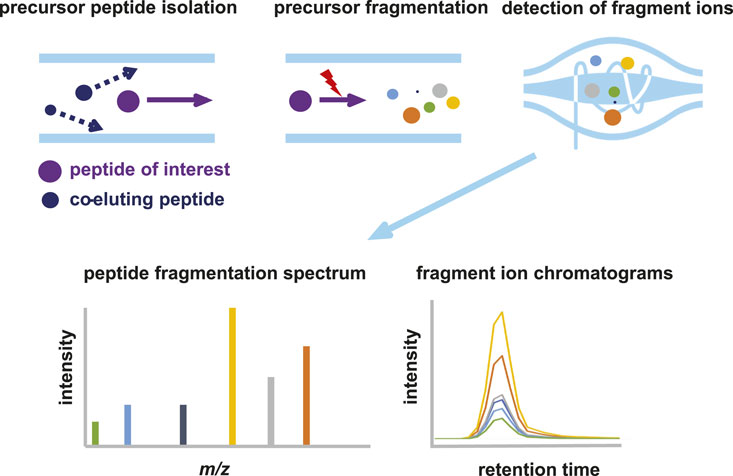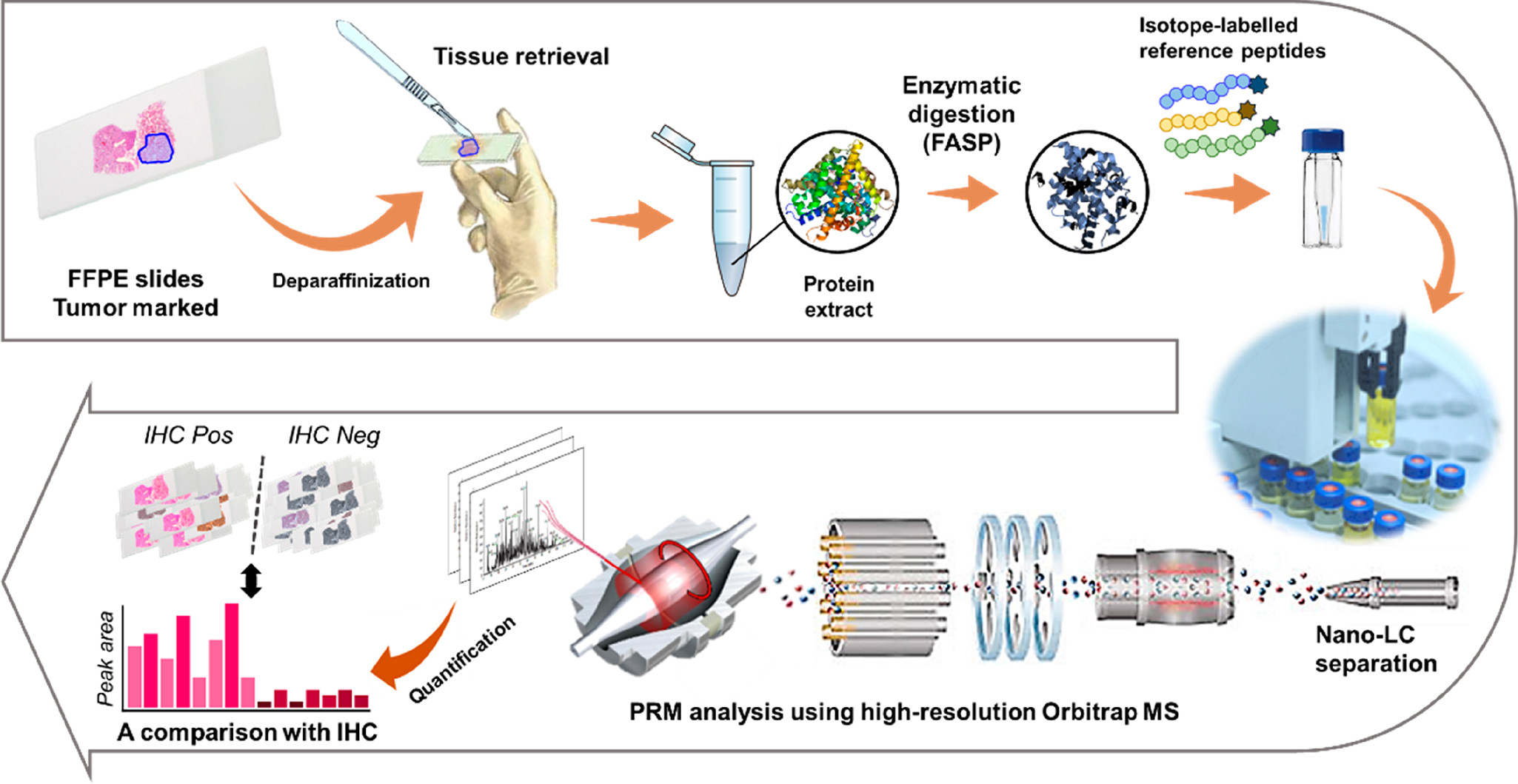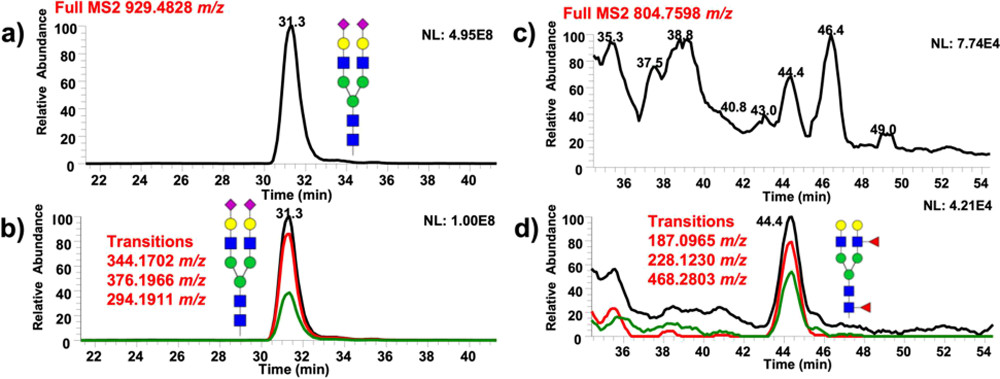PRM Mass Spec Service
- Biomarker Validation
- Quantitative Analysis of Protein Expression Profiles
- Quantitative Protein-Protein Interaction Studies
- Accurate Quantification of Low-Abundance Peptides
- Higher Specificity: Effectively distinguishing target peptides from background noise.
- High-Precision Quantification: Achieving highly reproducible quantitative data by accurately monitoring fragment ions.
- Low-Abundance Protein Analysis: Enabling highly sensitive detection of low-abundance peptides in complex biological samples.
The PRM Mass Spectrometry Service utilizes PRM technology to achieve highly sensitive and precise quantification of specific proteins by accurately monitoring multiple characteristic ions of target peptides through high-resolution mass spectrometers. PRM (Parallel Reaction Monitoring) is a targeted quantitative mass spectrometry technique based on high-resolution instruments, such as the Thermo Orbitrap Fusion Lumos. By selecting specific precursor ions and simultaneously detecting all their fragment ions, PRM enables highly specific and accurate monitoring of target peptides. It is widely applied in fields such as biomarker validation, signal pathway analysis, drug target research, and post-translational modification (PTM) analysis, making it a key tool in modern quantitative proteomics research.

Bezstarosti, Karel et al. Frontiers.2024.
Schematic Representation of PRM Mass Spec
PRM Mass Spec Service at MtoZ Biolabs
MtoZ Biolabs' PRM mass spectrometry service uses an advanced high-resolution mass spectrometry platform based on PRM (Parallel Reaction Monitoring) technology to accurately monitor multiple characteristic ions of target peptides. It can perform highly sensitive and quantitative analysis of specific proteins in complex biological samples. Our PRM Mass Spec Service supports:
Principle of PRM Mass Spec
In a PRM mass spectrometry experiment, peptide mixtures are first separated using liquid chromatography (Nano-LC). The precursor ions of target peptides, which have specific mass-to-charge ratios (m/z), are then selected using a quadrupole or ion trap. These precursor ions are pre-determined target analytes. They are introduced into the collision cell (typically employing Collision-Induced Dissociation, CID), where they collide with gas molecules to produce specific fragment ions. All fragment ions are then simultaneously detected and scanned at high resolution. During the data processing stage, extracted ion chromatograms (XICs) are generated for each target peptide fragment ion. The intensity and chromatographic peak area of these ions are used for high-precision quantitative analysis.

Park J, et al. J Proteome Res. 2020.
The Workflow of PRM Experiment using FFPE Tissue
Unlike traditional MRM (Multiple Reaction Monitoring), PRM mass spectrometry simultaneously monitors multiple target fragment ions of a precursor ion rather than relying on just one selected fragment ion for detection. This enables PRM to capture all fragment ions of a specific precursor ion in a single scan, offering:
At MtoZ Biolabs, we combine advanced Nano-LC systems with the Thermo Orbitrap Fusion Lumos mass spectrometer to ensure the highest data quality and reproducibility in our PRM mass spectrometry services.
Case Study
PRM Mass Spec Enables Precise Quantification and Efficient Isomer Differentiation of N-Glycans
N-Glycan modifications play a critical role in regulating protein functions and biological processes, significantly contributing to disease mechanism research and biomarker discovery. However, the structural complexity and high isomer diversity of N-glycans pose significant challenges for their precise quantification and targeted analysis in analytical chemistry and biology. In this study, a targeted N-glycan analysis method based on PRM mass spectrometry was developed using a Quadrupole-Orbitrap mass spectrometer. This method successfully quantified a variety of complex N-glycans, including the precise differentiation of isomers. Compared to traditional methods, it significantly improved the detection sensitivity and specificity of N-glycans in complex biological samples.

Cho, B. G. et al. Anal Chem. 2022.
PRM Analysis of the N-glycan HexNAc₄Hex₅NeuAc₂
Why Choose MtoZ Biolabs?
1. Advanced Analysis Platform: MtoZ Biolabs established an advanced PRM Mass Spec Service platform, guaranteeing reliable, fast, and highly accurate analysis service.
2. One-Time-Charge: Our pricing is transparent, no hidden fees or additional costs.
3. High-Data-Quality: Deep data coverage with strict data quality control. AI-powered bioinformatics platform integrates all PRM Mass Spec Service data, providing clients with a comprehensive data report.
What Could be Included in the Report?
1. Comprehensive Experimental Details
2. Materials, Instruments, and Methods
3. Total Ion Chromatogram & Quality Control Assessment (project-dependent)
4. Data Analysis, Preprocessing, and Estimation (project-dependent)
5. Bioinformatics Analysis
6. Raw Data Files
MtoZ Biolabs, an integrated chromatography and mass spectrometry (MS) services provider.
Related Services
Quantitative Proteomics Service
PRM-based Post-translational Modification Site Analysis Service
How to order?







